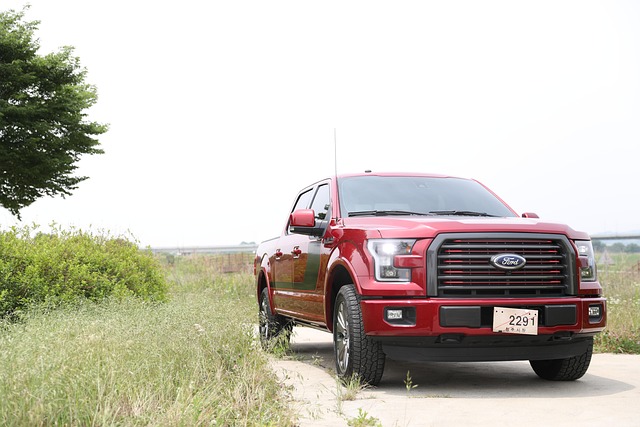Looking to register your car in California? Navigating the process can seem daunting, but understanding the steps is key. This comprehensive guide breaks down the California car registration process, emphasizing the critical role of VIN verification. We’ll walk you through gathering essential documents, explaining each step involved, and highlighting post-registration considerations. By following these instructions, you’ll be on your way to securing your vehicle’s registration smoothly and efficiently.
- Understanding the California Car Registration Process
- Gathering Required Documents for VIN Verification
- The Role of the Vehicle Identification Number (VIN)
- Steps to Register Your Vehicle in California
- Post-Registration: Important Considerations and Next Steps
Understanding the California Car Registration Process

In California, car registration is a crucial process that ensures vehicle owners comply with state regulations. It involves several steps designed to verify ownership and ensure the vehicle meets safety standards. Understanding this process begins with recognizing the core requirements, such as providing proof of insurance, paying applicable fees, and undergoing a Vehicle Identification Number (VIN) verification. This critical step includes a comprehensive inspection to validate the car’s identity and check for any potential issues or outstanding warrants.
A mobile VIN verifier plays a significant role in streamlining this process by offering convenient, on-site VIN inspections. This service allows owners to verify their vehicle’s history quickly and efficiently, ensuring they have all the necessary documents before proceeding with registration. With these measures in place, California drivers can navigate the registration process with greater ease and peace of mind.
Gathering Required Documents for VIN Verification

Before you begin the car registration process in California, it’s essential to gather all the required documents for a successful VIN (Vehicle Identification Number) verification. This step is crucial as it ensures your vehicle meets safety and emission standards set by the state. You’ll need several key documents, including proof of ownership, current registration, valid insurance, and identification. Additionally, for a hassle-free process, consider using a mobile vin verifier to facilitate this initial check.
During VIN verification, you may be required to present a vehicle inspection report or pass a roadworthiness test. Ensure all your paperwork is in order and accurate to streamline the registration experience. Remember, a well-prepared set of documents can significantly contribute to a smooth transition from buying a car to officially registering it with California’s Motor Vehicle Department.
The Role of the Vehicle Identification Number (VIN)
The Vehicle Identification Number (VIN) is a crucial component in the registration process for California vehicles. It serves as a unique identifier for each car, much like a fingerprint, and plays a vital role in ensuring accurate and secure vehicle documentation. When you bring your car to a California Department of Motor Vehicles (DMV) office or use an online registration service, the VIN is verified as part of the inspection process. This verification step is essential for maintaining the integrity of the state’s vehicle records.
A mobile vin verification service, using advanced technology and a mobile vin verifier, can offer a convenient alternative to traditional DMV visits. These services enable owners to check their VIN online or through a mobile app, providing instant access to critical information about their vehicle’s history and ensuring a smoother registration process. This modern approach to vin inspection allows for faster transactions, especially when combined with other digital registration tools available in California.
Steps to Register Your Vehicle in California

Registering a car in California involves several steps to ensure your vehicle is legal and insured on state roads. First, gather all necessary documents including the title, proof of insurance, and a valid driver’s license. You’ll also need to complete a California Vehicle Registration Application (DMV Form VRM-1).
Next, perform a VIN verification through the Department of Motor Vehicles (DMV) or utilize a trusted mobile vin inspection service. This step is crucial for confirming vehicle history and identifying any potential issues. Once your vehicle passes inspection, you can visit a DMV office to submit your application and required documents. Alternatively, many services offer convenient mobile vin verifier options, allowing you to complete the process from the comfort of your home or workplace.
Post-Registration: Important Considerations and Next Steps

After successfully registering your vehicle in California, there are several important considerations and next steps to ensure a smooth ownership experience. One crucial step is conducting a Vehicle Identification Number (VIN) verification. This process involves checking the VIN accuracy and ensuring it matches the vehicle’s make, model, and year. You can facilitate this with a mobile VIN inspection service, where a professional will come to your location to perform the check using advanced technology.
Additionally, keeping records of all registration documents, insurance policies, and maintenance schedules is essential. California requires vehicle owners to display current license plates, so ensure you comply with these regulations. Moreover, familiarizing yourself with local traffic laws and parking regulations will help avoid any penalties. Consider utilizing mobile VIN verifier services for added convenience, as they streamline the initial setup process and provide peace of mind.
Registering a car in California involves several steps, from understanding the process to providing necessary documentation for VIN verification. By following these guidelines, you can ensure a smooth registration experience and maintain compliance with state regulations. Remember that accurate and complete information is key, making VIN verification an essential part of the car registration process in California.
